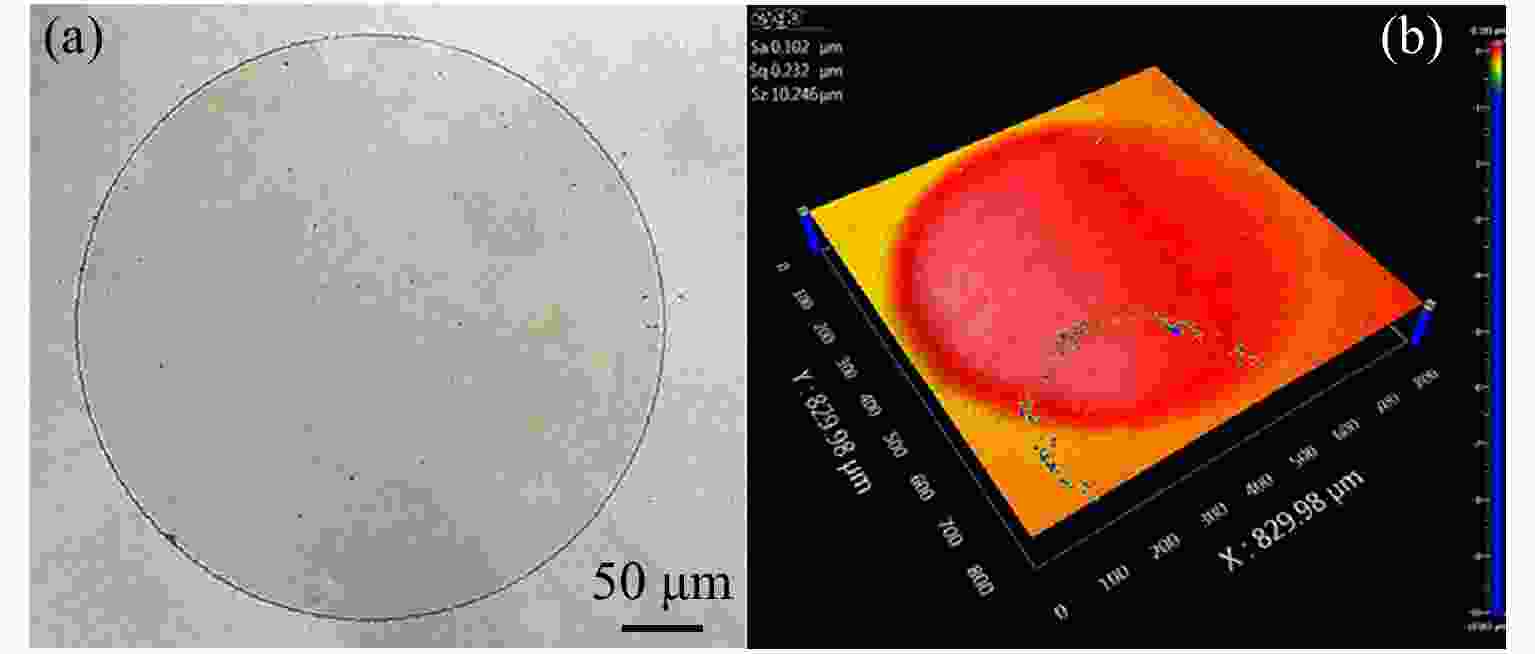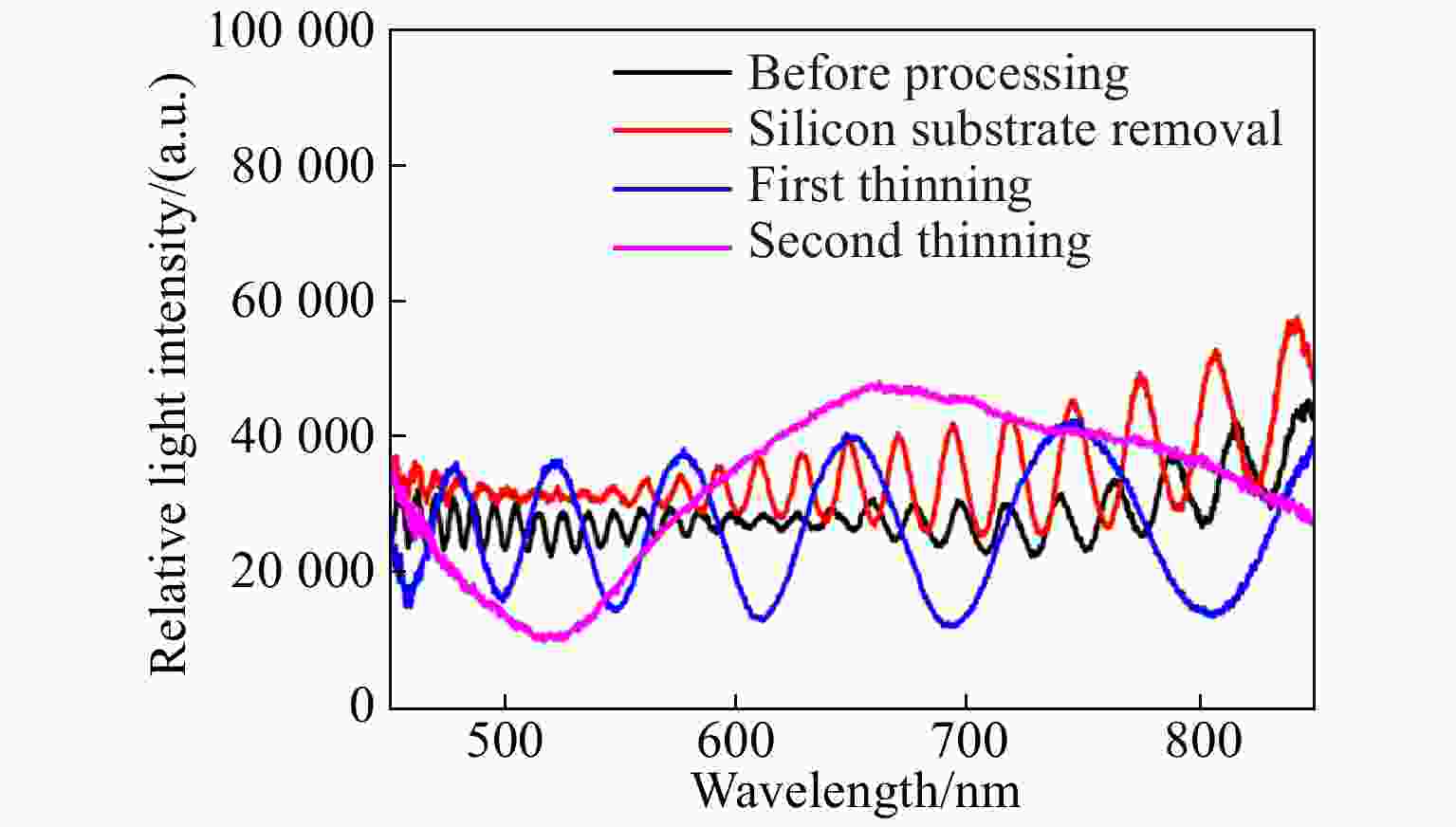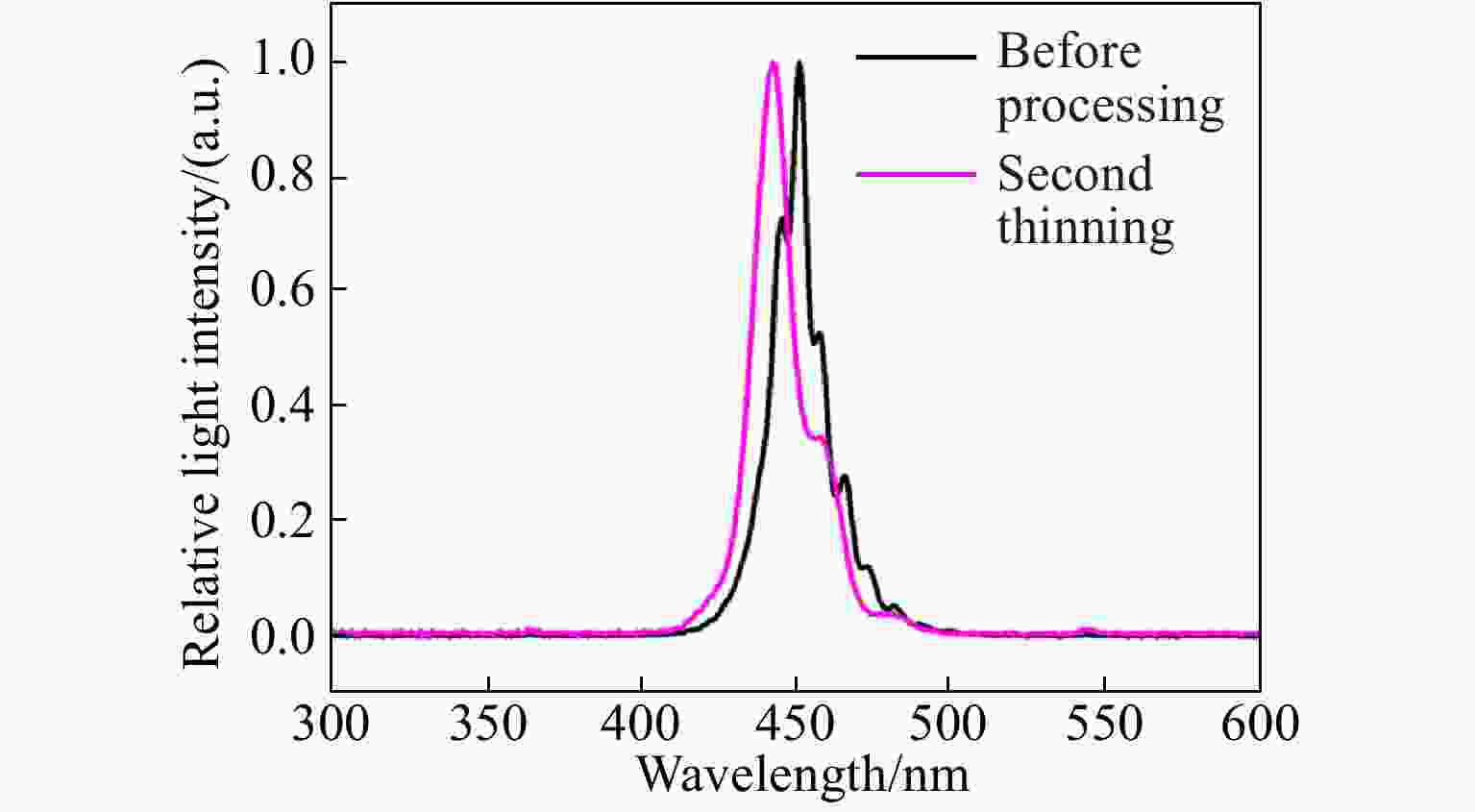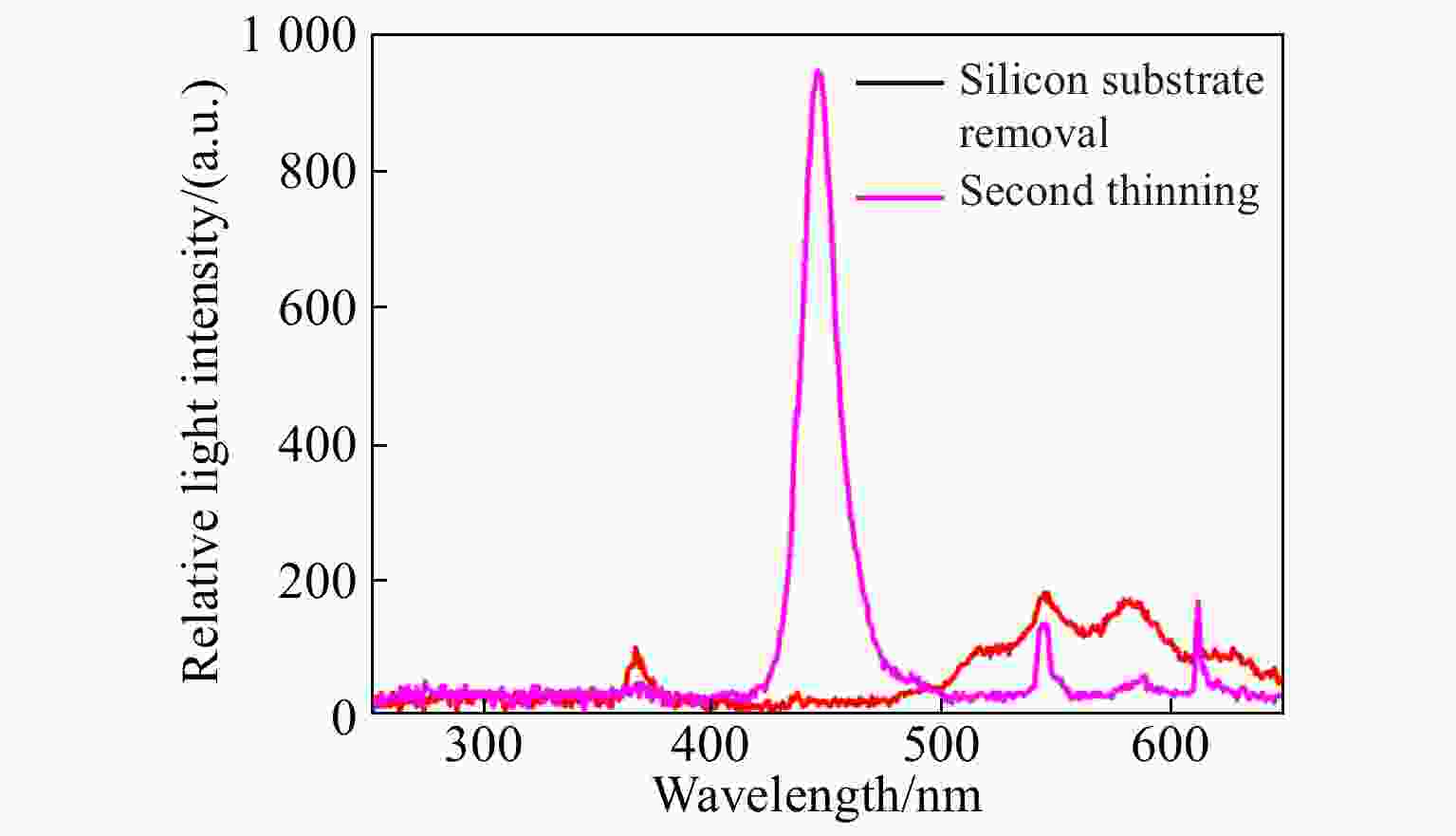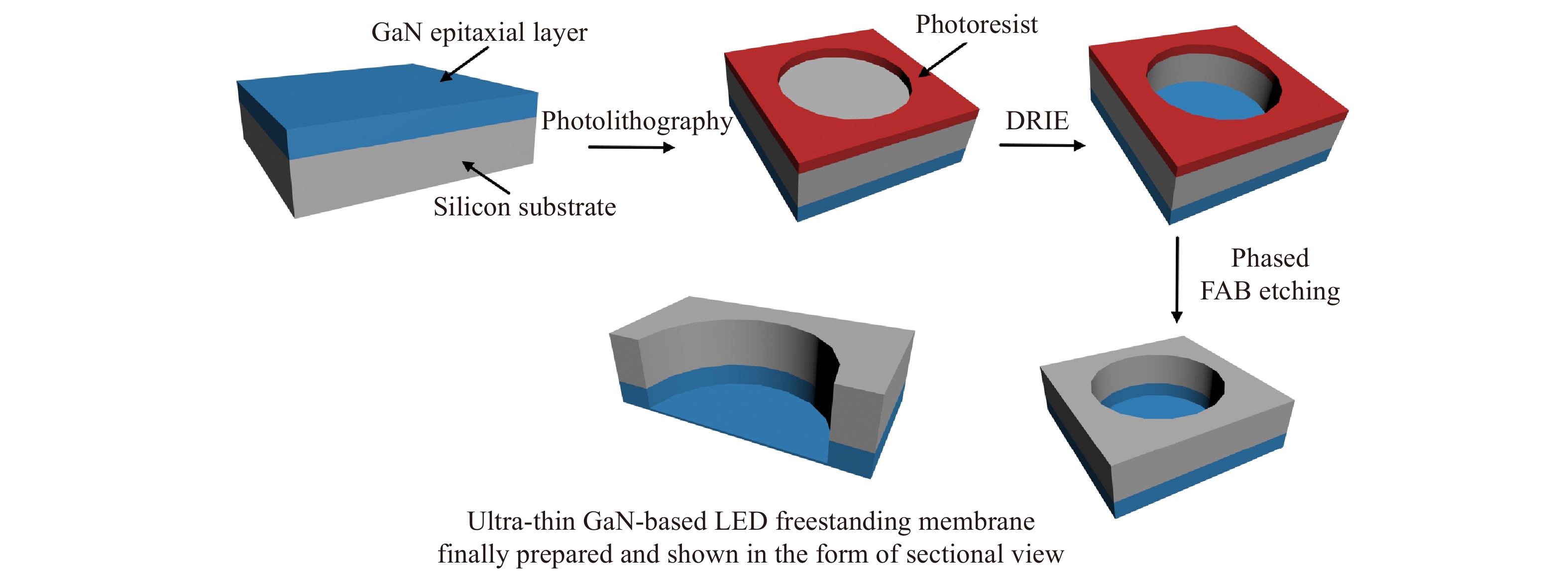| [1] |
PEARTON S J, ZOLPER J C, SHUL R J, et al. GaN: processing, defects, and devices[J]. Journal of Applied Physics, 1999, 86(1): 1-78.
|
| [2] |
ZHANG Y H, DADGAR A, PALACIOS T. Gallium nitride vertical power devices on foreign substrates: a review and outlook[J]. Journal of Physics D:Applied Physics, 2018, 51(27): 273001. doi: 10.1088/1361-6463/aac8aa
|
| [3] |
NAKAMURA S, PEATRON S, FASOL G. The Blue Laser Diode: the Complete Story[M]. 2nd ed. Berlin: Springer, 2000.
|
| [4] |
ALHASSAN A I, YOUNG E C, ALYAMANI A Y, et al. Reduced-droop green III-nitride light-emitting diodes utilizing GaN tunnel junction[J]. Applied Physics Express, 2018, 11(4): 042101. doi: 10.7567/APEX.11.042101
|
| [5] |
LI B, REN Y, CHANG B K. Stability of gradient-doping GaN photocathode[J]. Chinese Optics, 2018, 11(4): 677-683. (in Chinese) doi: 10.3788/co.20181104.0677
|
| [6] |
MORELLE C, THÉRON D, DERLUYN J, et al. Gallium nitride MEMS resonators: how residual stress impacts design and performances[J]. Microsystem Technologies, 2018, 24(1): 371-377. doi: 10.1007/s00542-017-3293-0
|
| [7] |
YANG ZH CH, LÜ J N, YAN G ZH, et al. Fabrication of GaN-based MEMS structures using dry-etch technique[J]. Nanotechnology and Precision Engineering, 2011, 9(1): 78-82. doi: 10.3969/j.issn.1672-6030.2011.01.015
|
| [8] |
LI X, SHI ZH, HE SH M, et al. MEMS-tunable Ⅲ-nitride grating on silicon substrate[J]. Optics and Precision Engineering, 2014, 22(11): 2945-2949. (in Chinese) doi: 10.3788/OPE.20142211.2945
|
| [9] |
TABATABA-VAKILI F, ROLAND I, TRAN T M, et al. Q factor limitation at short wavelength (around 300 nm) in III-nitride-on-silicon photonic crystal cavities[J]. Applied Physics Letters, 2017, 111(13): 131103. doi: 10.1063/1.4997124
|
| [10] |
PRABASWARA A, MIN J W, ZHAO CH, et al. Direct growth of III-nitride nanowire-based yellow light-emitting diode on amorphous quartz using thin Ti interlayer[J]. Nanoscale Research Letters, 2018, 13(1): 41. doi: 10.1186/s11671-018-2453-1
|
| [11] |
LI T P, ZHAO G ZH, LU T P, et al. Effect of Undoped GaN layer thickness on the wavelength uniformity of GaN based blue LEDs[J]. Chinese Journal of Luminescence, 2017, 38(9): 1198-1204. (in Chinese) doi: 10.3788/fgxb20173809.1198
|
| [12] |
ZHOU ZH Y, YANG K, HUANG Y M, et al. Recombination Process in InGaN/GaN MQW LED on Silicon with δ-Si Doped n-GaN Layer[J]. Chinese Journal of Luminescence, 2018, 39(12): 1722-1729. (in Chinese) doi: 10.3788/fgxb20183912.1722
|
| [13] |
CHARLES M, MRAD M, KANYANDEKWE J, et al. Extraction of stress and dislocation density using in-situ curvature measurements for AlGaN and GaN on silicon growth[J]. Journal of Crystal Growth, 2019, 517: 64-67. doi: 10.1016/j.jcrysgro.2019.04.014
|
| [14] |
WANG K J, WANG A Q, JI Q B, et al. Epitaxy of GaN in high aspect ratio nanoscale holes over silicon substrate[J]. Applied Physics Letters, 2017, 111(25): 252101. doi: 10.1063/1.5002529
|
| [15] |
ISHIKAWA H, ASANO K, ZHANG B, et al. Improved characteristics of GaN-based light-emitting diodes by distributed Bragg reflector grown on Si[J]. Physica Status Solidi (A), 2004, 201(12): 2653-2657.
|
| [16] |
ISHIKAWA H, JIMBO T, EGAWA T. GaInN light emitting diodes with AlInN/GaN distributed Bragg reflector on Si[J]. Physica Status Solidi C, 2008, 5(6): 2086-2088. doi: 10.1002/pssc.200778441
|
| [17] |
ZHANG B J, EGAWA T, ISHIKAWA H, et al. Thin-film InGaN multiple-quantum-well light-emitting diodes transferred from Si (111) substrate onto copper carrier by selective lift-off[J]. Applied Physics Letters, 2005, 86(7): 071113. doi: 10.1063/1.1863412
|
| [18] |
CHEN T F, WANG Y Q, XIANG P, et al. Crack-free InGaN multiple quantum wells light-emitting diodes structures transferred from Si (111) substrate onto electroplating copper submount with embedded electrodes[J]. Applied Physics Letters, 2012, 100(24): 241112. doi: 10.1063/1.4729414
|
| [19] |
LUO R H, RAO W T, CHEN T F, et al. Vertical InGaN multiple quantum wells light-emitting diodes structures transferred from Si (111) substrate onto electroplating copper submount with through-holes[J]. Japanese Journal of Applied Physics, 2012, 51(1R): 012101. doi: 10.7567/JJAP.51.012101
|
| [20] |
HUANG B B, XIONG CH B, TANG Y W, et al. Changes of stress and luminescence properties in GaN-based LED films before and after transferring the films to a flexible layer on a submount from the silicon epitaxial substrate[J]. Acta Physica Sinica, 2015, 64(17): 177804. (in Chinese) doi: 10.7498/aps.64.177804
|





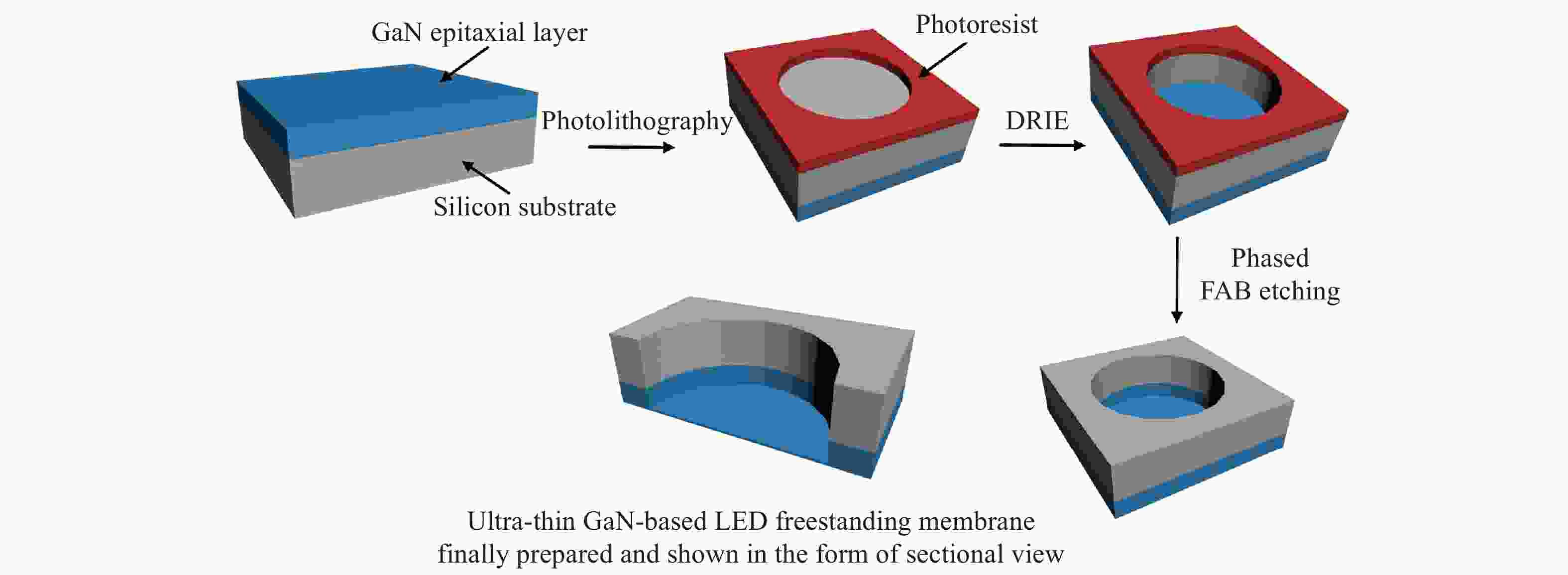
 下载:
下载:
